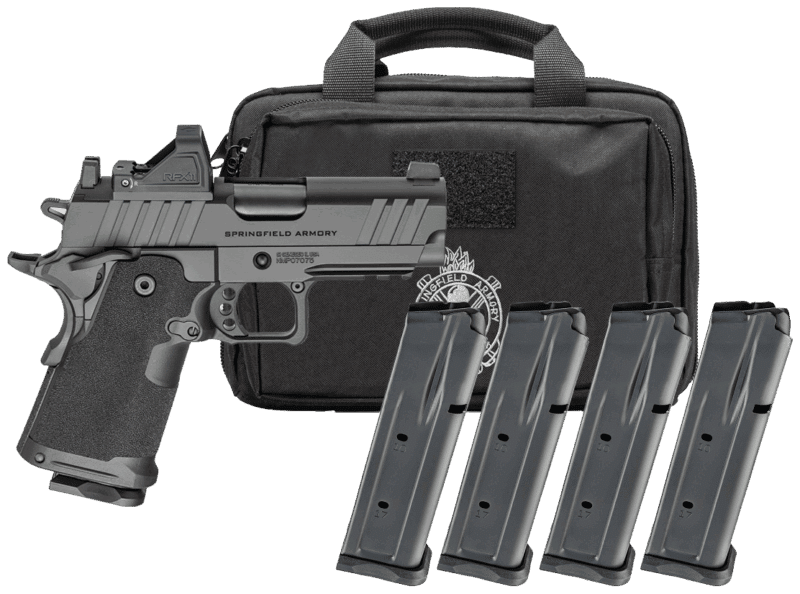WWII’s Deadly Doorknocker: The M12 Gun Motor Carriage
September 13th, 2025
11 minute read
During World War I, the French developed the very effective 155mm GPF cannon. Many of these were provided to American forces in France beginning in early 1918, and the weapon so impressed the American Expeditionary Force (AEF) that the big artillery piece was produced in the United States.
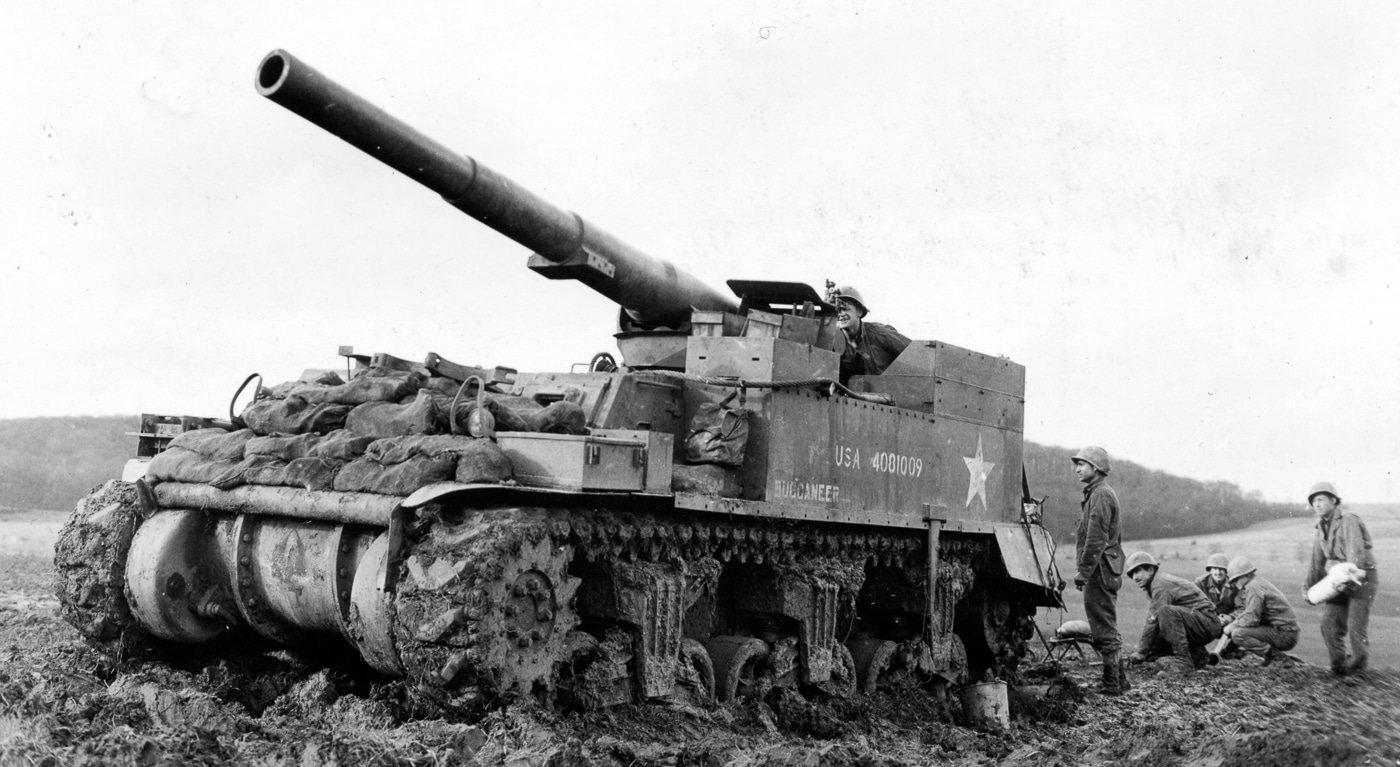
During World War II, the U.S. Army wanted extra mobility for its artillery in order to keep up with the fast-moving armored and mechanized infantry divisions. Most famous of these U.S. mobile artillery pieces was the M7 105mm Howitzer Motor Carriage (HMC), sometimes called “Priest”. The M7 105mm HMC was based, initially, on the M3 Lee/Grant tank chassis, and more than 4,300 of all variants of this highly successful vehicle were made by the summer of 1945.
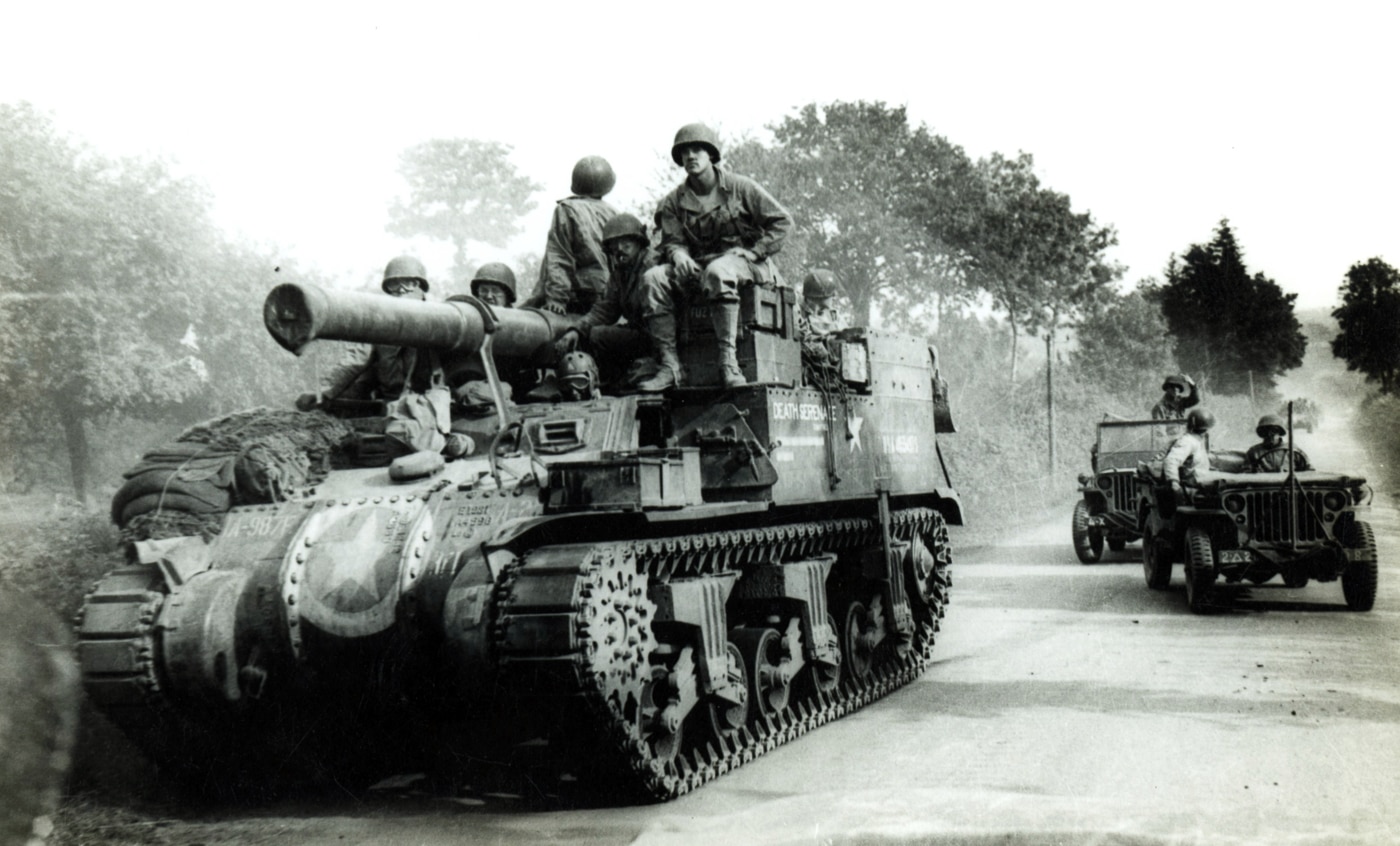
The big 155mm gun was also coupled with the M3 Lee/Grant tank chassis, and this became the 155mm Gun Motor Carriage (GMC) M12. Only 100 of the M12 GMCs were built, but while they are a lesser-known U.S. AFV, the vehicles still played a unique and important role in the final defeat of Germany.
Creating the M12
The M12 is a classic “self-propelled gun”. There is no turret or fighting compartment, and the massive 155mm cannon dominates the outline of the vehicle. To make room for the gun mount, the M3’s engine compartment was repositioned to the center of the chassis. The driver and vehicle commander sit forward in armored compartments, while the four-man gun crew rode and served the gun in a thinly armored compartment with an open top.
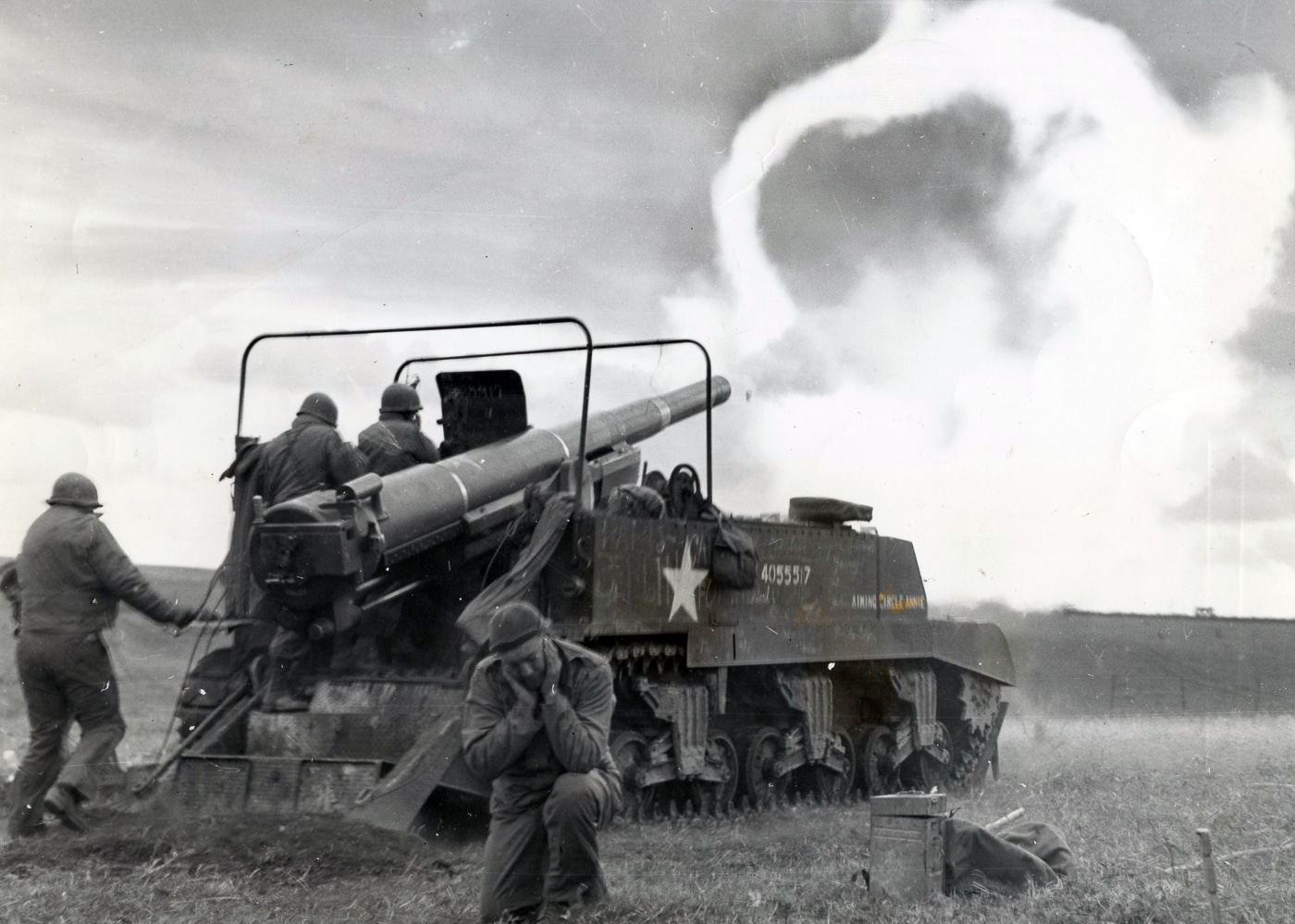
The 155mm gun came from available stock, and examples of the original M1917, the updated M1918, or the slightly modernized M1918M1 were mounted. Performance figures for all three variants are very close. Aboard the M12, there was little ability to traverse (only 14 degrees) or elevate the gun (from +30 degrees to -5 degrees). A large spade was mounted at the rear to dig in the vehicle, absorb recoil, and add stability. The M1918 gun fired a 95-lb. projectile out to a maximum of 20,000 yards. Its muzzle velocity clocked a lively 2,360 feet per second.
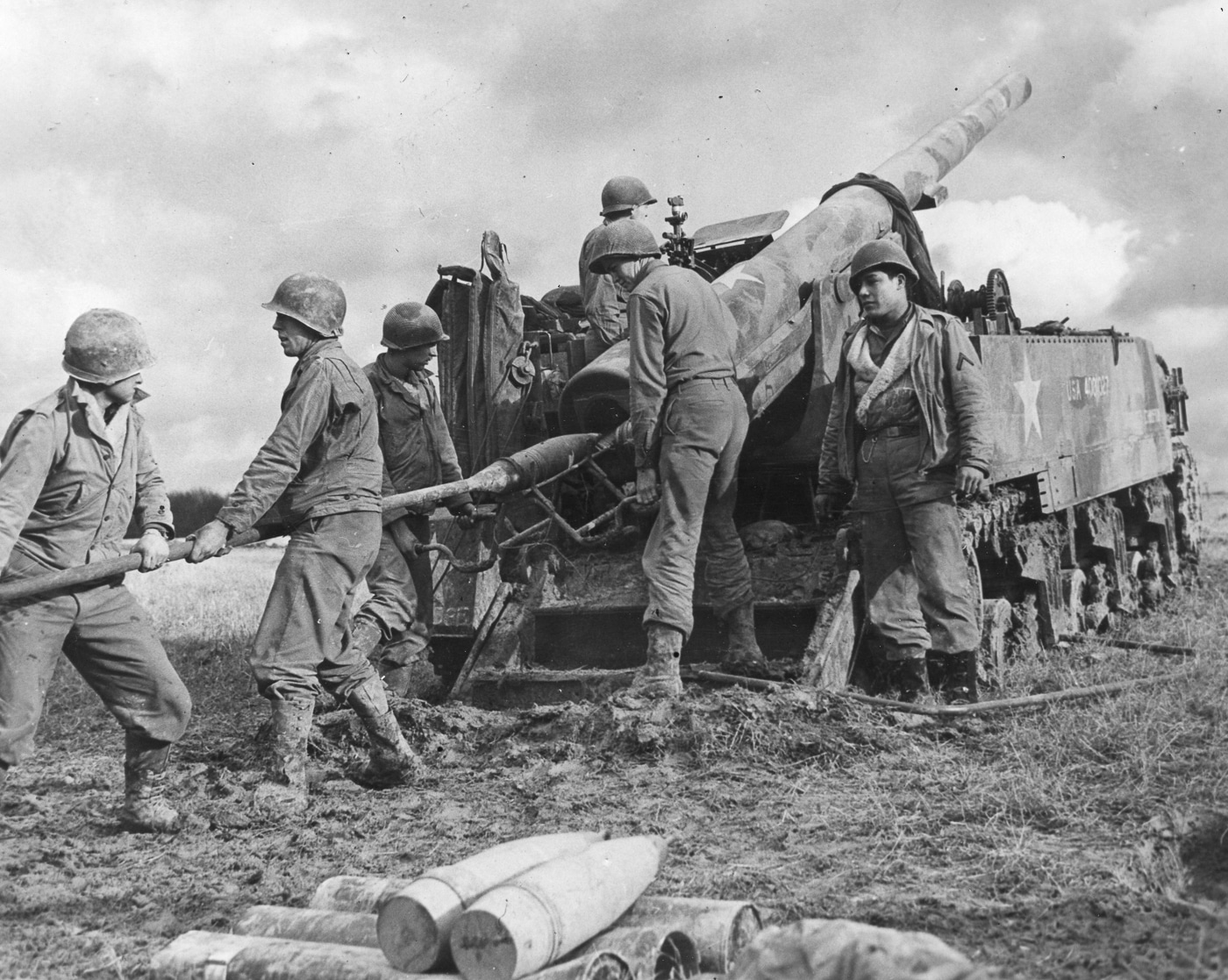
An experienced gun crew could fire four rounds per minute, but there was very limited ammunition storage aboard — with room for just 10 155mm rounds and the necessary propellant charges. To compensate, the U.S. Army developed a specialized ammunition carrier (the Cargo Carrier M30) on the M12 chassis to carry 40 rounds/propellant charges, along with additional personnel to serve the gun. Whenever possible, the M12 operated in tandem with an M30.
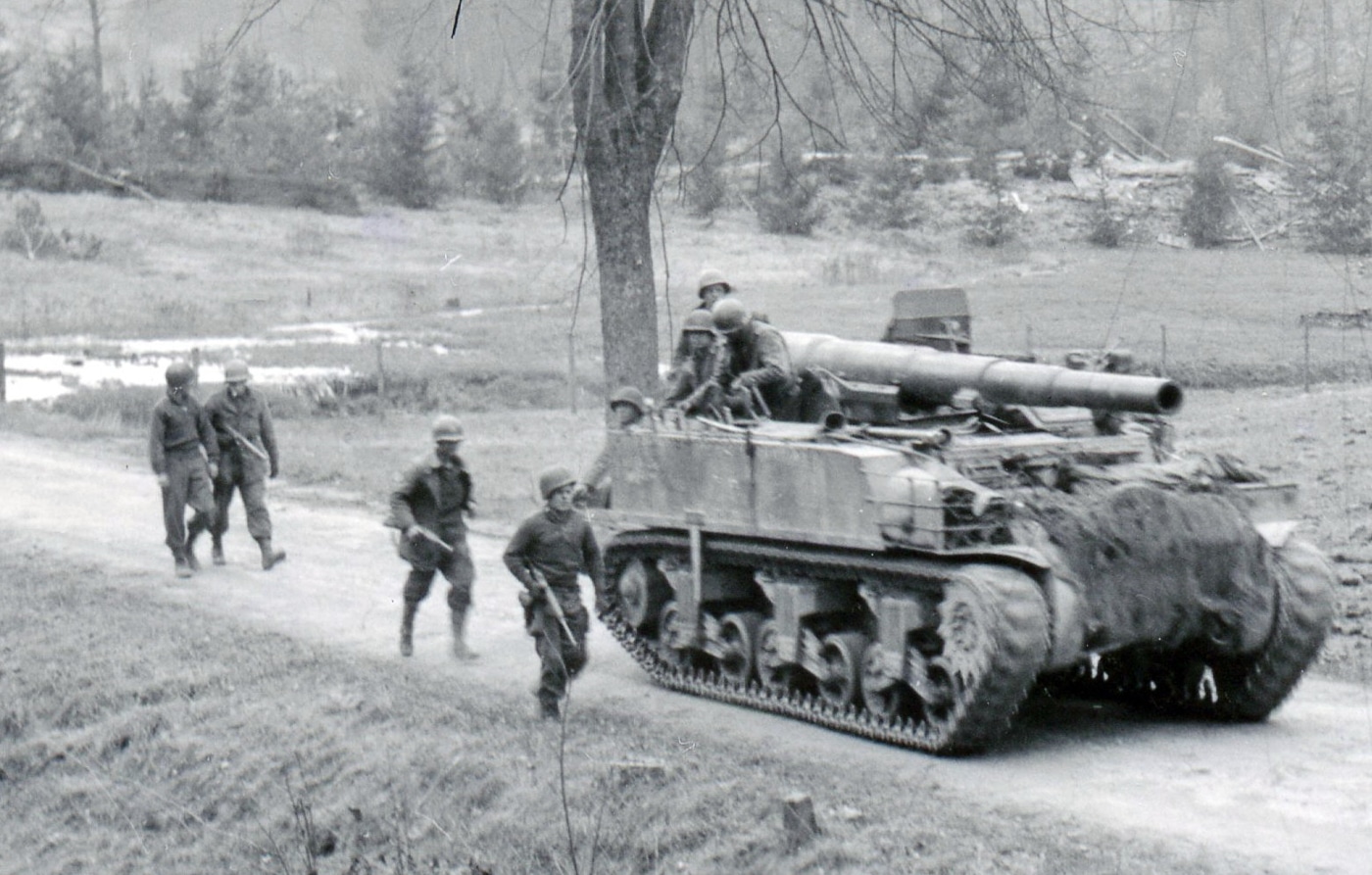
The M12 was not originally envisioned as a “bunker buster”, but during the siege of Brest, France in September 1944, the big 155mm guns were brought in to penetrate the thick walls of the German bunkers in the French fortress city.
A September 1944 field artillery report describes the developing tactics with the M12’s firing directly into enemy targets.
Firing of the 155 Gun, M12, SP on Destruction Missions with the T105 Fuse. The following lessons have been learned so far with respect to the firing of the 155 Guns M12, SP on destruction missions:
-The high terminal velocity afforded by the 155 Gun M12 makes it a suitable weapon for use with the T-105 fuse at reasonable ranges. The highest possible charge must be used to obtain high terminal velocity.
-The appearance of this gun in a short-range, direct fire position is almost certain to be noticed by the enemy after a few rounds because of the size of the piece and the immense cloud of dust raised by its discharge.
-Front line infantry prefers not to have the gun in their vicinity because immediate counter battery fire by the enemy results. Indirect fire methods, such as using the panoramic sight with an observer adjusting fire only a short distance away, are preferable to direct laying and must be used when hostile artillery is active.
-Careful reconnaissance of positions and thorough digging in are advisable prior to firing this gun on these missions. Adequate time must be allowed for thorough reconnaissance and preparation of positions.
-The T105 fuse should not be used for adjustment as it wastes ammunition, cannot be readily picked up by observers, and the maximum effect of the fuse cannot be obtained. Adjustments should be made by either delay or quick fuses.
After their direct-fire action during the siege of Brest, the M12s spent the remainder of 1944 providing long range fire support with their 155mm guns. As U.S. forces progressed across France and Belgium, the next formidable German fortress was the vaunted Siegfried Line. The “Westwall” extended from Germany’s western border with the Netherlands nearly 400 miles to the Swiss border.
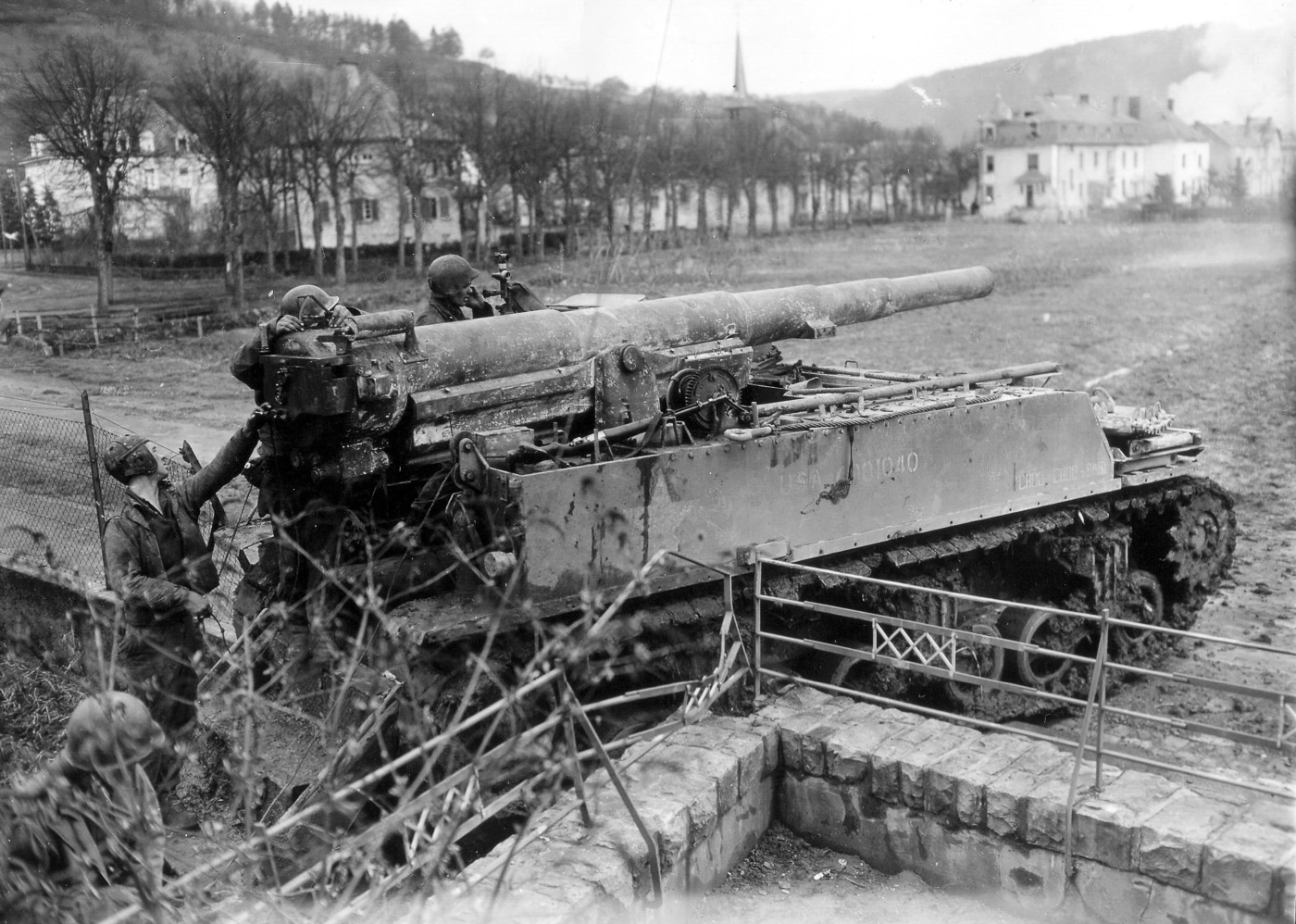
Along the way, the defenses included massive reinforced concrete bunkers, pillboxes, anti-tank gun positions, machine gun nests, minefields and tank traps. American troops first reached the Siegfried Line in September 1944, and while the Allied advance was interrupted by the Battle of the Bulge, the attack on the German defensive line resumed in the late winter of 1945.
Bunker-Busting on the Siegfried Line
Second Lieutenant E. Robinson, a forward observer of the 117th Infantry Regiment (30th Infantry Division) describes the challenges in attacking the formidable German defenses in the U.S. Army study “Breaching the Siegfried Line”:
“The pillboxes were admirably sited to take full advantage of the defensive potential of the terrain. Their reduction, however, and the surrender of their occupants was realized through a variety of very simple but militarily sound methods. The elaborate, concrete strongpoint reduction technique as used on the Atlantic Wall, and as taught at the engineer and infantry schools in the United States was neither used nor applicable.
In regarding the pillboxes, small arms fire through the embrasures played an important part. German instructions for using the pillbox called for most of the personnel remaining outside in firing positions around the pillboxes. Only 30 or 40 percent of the pillbox complement would be permitted to remain inside the box; the box normally fired in only one direction and was dependent upon protection by adjacent boxes; neutralizing these adjacent boxes with direct artillery, tank and small arms fire permitted assaulting infantry to work around to the rear, unprotected entrance to the pillbox. If the pillbox personnel did not surrender by this time a bazooka or tank shell through the rear door would normally clinch the argument.
The effect of direct artillery hits on the pillboxes, except the 155mm SP gun and possibly heavier calibers, was not sufficient to destroy the box or prevent its future use. The concussion by a direct hit certainly discouraged not too strong-hearted defenders. The 57mm anti-tank gun, 75mm and 105mm were, except for direct hits in the embrasures, ineffective. They could remove the camouflage but little else. The 155mm howitzer required an uneconomical number of rounds to secure direct hits. The 155mm SP guns, at ranges between 2000 and 4000 yards with a concrete bursting fuse penetrated the 6 feet of reinforced concrete with 3 to 5 hits. The 8-inch howitzers at 8000 yards could average a direct hit per 5 rounds and penetrate after 5 hits.”
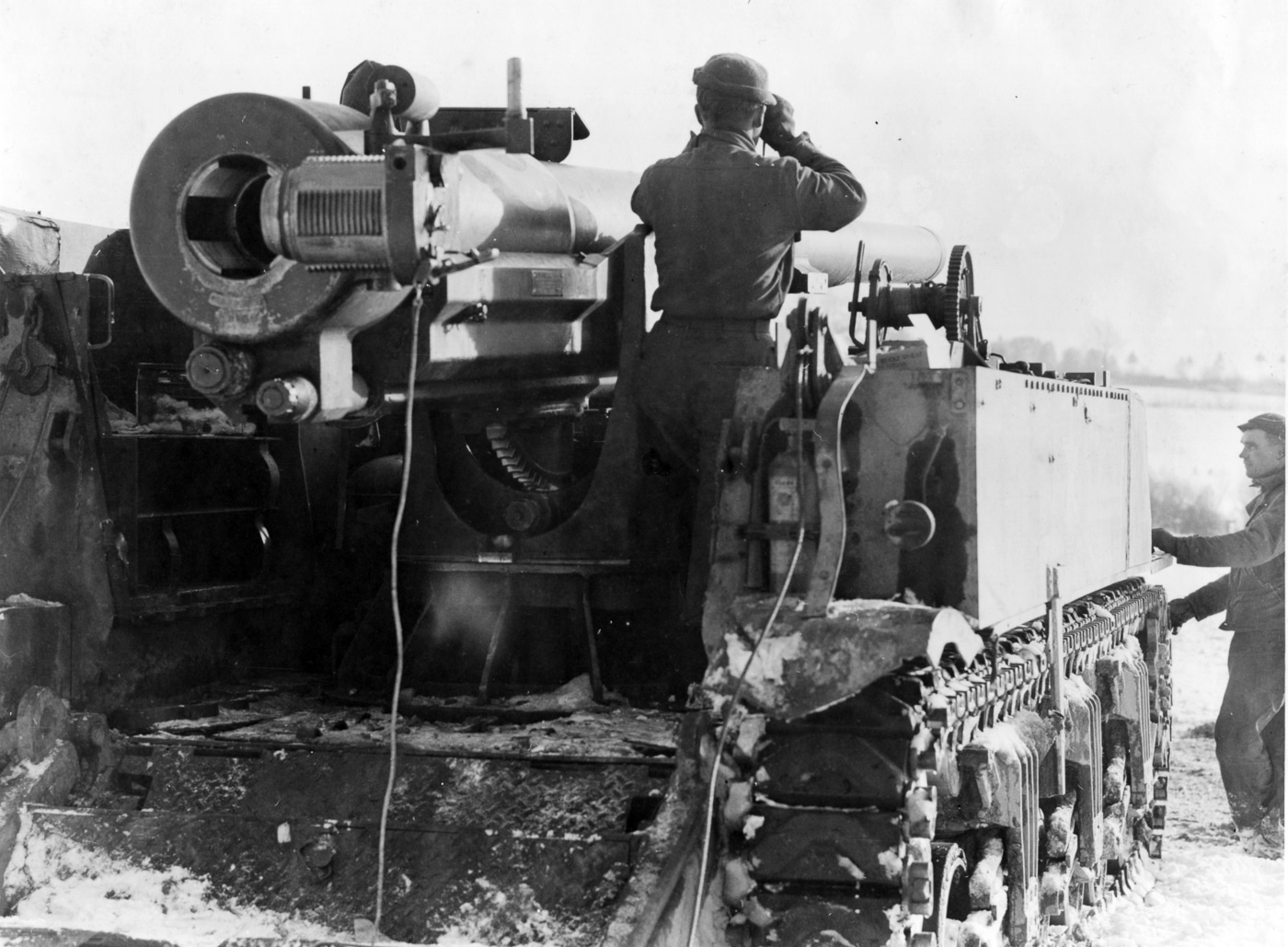
The M12 155mm self-propelled guns were brought in again to fire directly on the fortifications. The following comments show the effectiveness of the M12, particularly when used within specific parameters.
“Using the 155mm SPG at ranges between 2000 and 4000 yards, penetration is secured. Under 2000 yards the projectile disintegrates upon striking this concrete surface. Above 2000 yards using the CBF with 3 to 5 rounds we have penetrated six feet of reinforced concrete.” — Col. Otto Ellis, Executive Officer 30th Div. Arty
“Forty-three pillboxes were attacked by short range M12 fire, one by direct fire. M12 adjusted using fuse delay, switching to T105 fuse on obtaining the first target shot. Evidence of penetration was obtained on all targets.” — Lt. Col. Bradford Butler, Jr., 258th F.A. Bn. (155mm SP M12)
“The 155mm self-propelled guns were used very effectively where fields of fire could be had. Taking from ten to twenty rounds to knock out each box, as it often took several rounds to knock off the dirt and other camouflage material before they were able to work directly on the pillboxes.” — Via the 119th Infantry Regiment
“For the accomplishment of the mission the Battalion used one (1) battery on direct laying, using T-105 Concrete Piercing Fuses. After very careful prior planning and extensive reconnaissance, pieces were brought into position under cover of darkness and used singly. Pillboxes were not only penetrated, but in some instances reduced to rubble. In order not to disclose the proposed zone of attack, the operation was carried out in a number of sectors.” — From the 30th Infantry Division artillery
Blasting Bunkers
The M12 GMC is a relatively rare combat vehicle, and the Siegfried Line campaign provided its greatest opportunity to shine. Over the years, the contributions of the field artillery crews and their self-propelled 155mm gun have been mostly forgotten, or lost among the tales of Sherman tanks, paratroopers, fighter pilots, or even the muddy, bloody infantry.
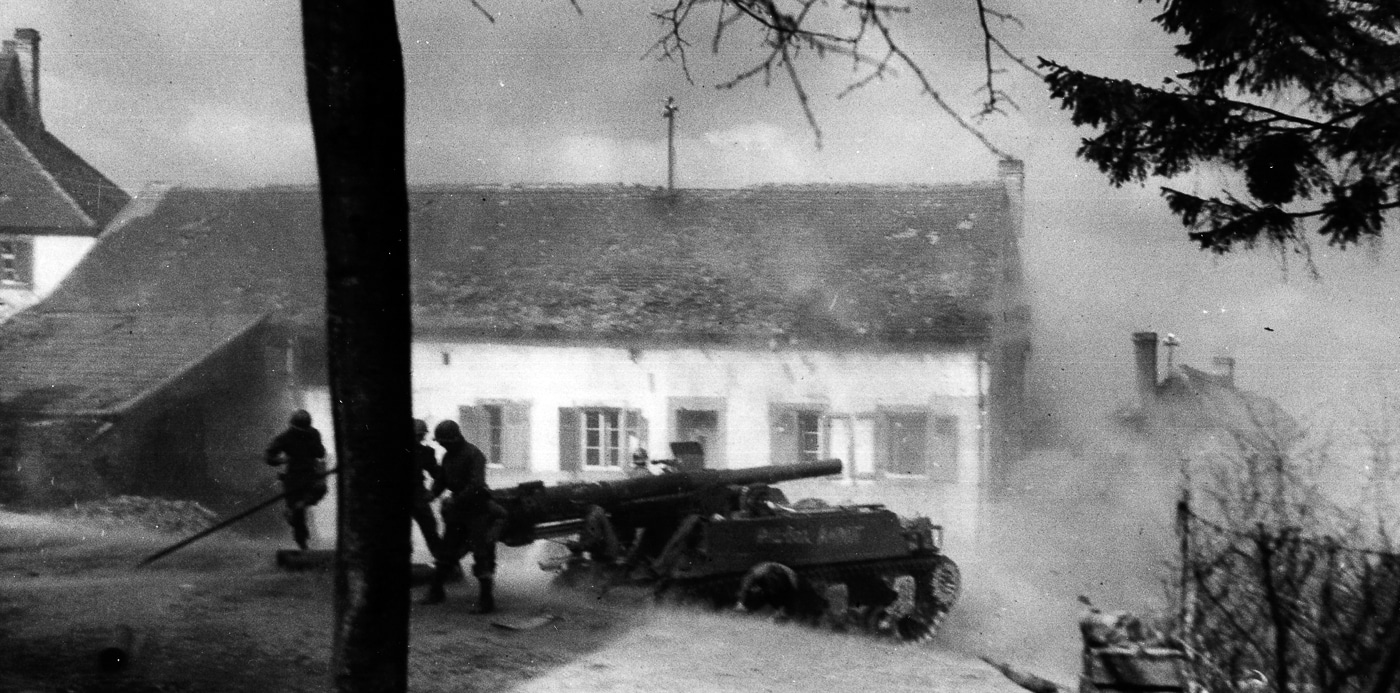
Digging through a mountain of combat reports from 1945, I stumbled upon a detailed account from the 358th Field Artillery Battalion titled Tactical use of the 155mm self-propelled gun M12.
This narrative offers everything you’d ever want to know about bunker-busting with a combat vehicle that has plenty of firepower and almost no armor.
Tactical Use of the 155mm Self-Propelled Gun M12
a) One gun section fired on several pillboxes in the vicinity of Saarfels. The gun was left in a slight defilade while a position 3500 yards from the pillboxes was prepared for night occupancy. The gun was placed in position during darkness and, using the direct lay sight, 14 rounds were fired at one pillbox. We obtained several hits, one of which blew the roof off the pillbox. The direct lay sight, however, proved too erratic for range purposes so we used it for deflection only and employed the gunner’s quadrant to obtain the range.
b) At Dillingen we fired at a conical machine gun pillbox with earth heaped around the foundation. Fifty rounds were fired from 1000 yards and failed to penetrate the pillbox, which may have been of steel construction. Using indirect fire from the same position, we were able to destroy four concrete flat-sided pillboxes, For the indirect fire, the gun was laid with an M2 compass.
c) We used our guns at much closer ranges on other pillboxes. One gun section was moved into position one night only 500 yards away from several pillboxes. The first day, working exposed to enemy fire, it destroyed one pillbox. The next day it was moved to another position and destroyed three pillboxes.
1) As people unfamiliar with the characteristics of the weapon often select unsatisfactory firing positions, it is better to tell us the mission and the general vicinity in which the guns should be located and leave the emplacing of the guns to us. Many people selecting positions for us fail to appreciate the lack of armor protection for the vehicle and think of the gun as a tank. We feel that the 155mm self-propelled gun should be used as a roving gun and moved to alternate positions as soon as the enemy registers on the one that is occupied.
2) Concrete pillboxes and stone buildings which tank and anti-tank guns cannot penetrate are proper targets for our guns. However, we often are asked to use them on targets such as machine gun nests and houses that could be taken care of by the better armored tanks and tank destroyers.
3) In the cities such as Dillingen we were able to take a gun close to the pillboxes — within 200 yards — because some defilade was afforded by the buildings and nearby protection for the men was afforded by the cellars. When we approached that close, however, two Sherman tanks accompanied the gun into position and machine guns covered it against German small arms fire. On such occasions self-propelled guns should always be given local protection.
4) When a gun is left in one position for any length of time some overhead protection and cover must be provided for the crew.
5) A German observation post overlooking Dillingen was found in a thick masonry tower with an elevator arrangement by which the observer could move up and down. A dome pillbox had been placed immediately in front of the tower to protect it. From a range of 700 yards, we destroyed the pillbox and knocked the top half off the tower.
6) Another observation post and its protecting pillbox were knocked out in Saarburg. As the firing position was exposed, we removed all excess baggage and ammunition from the gun except one round which was fused and loaded, and five others which were carried on the gun. We then moved the gun into position 800 yards from the pillbox. The first round blew the front out of the pillbox and the next two rounds were placed in the house directly behind.
7) On another occasion we took up positions on a hill overlooking a river valley in which many pillboxes could be observed at ranges of 2000 to 3000 yards. Rounds which hit the front of these pillboxes generally penetrated. Hutments in the same area presented a slightly different problem. They were protected with mounds of earth and delay fuses were used to clear the dirt before the T105 fuses could make penetration. Five rounds of the T105 were generally required.
The men of the 358th Field Artillery Battalion concluded that they were completely comfortable with the M12 and its combat capabilities, provided they made the decisions guiding its employment. The vehicle was truly a specialized piece of equipment, in this case employed in a role it was never envisioned to fulfill.
The doctrine on the employment of the self-propelled gun is sound. The gun is mobile and powerful and can get in and out of positions very quickly. We consider it tactically correct to employ these guns singly when they are used as an assault weapon.
The gun will easily destroy concrete pillboxes at ranges up to 3000 yards if the shell impact is at right angles. When the concrete surface is sloped a considerable expenditure of ammunition is necessary to secure penetration.
Complete and thorough reconnaissance for positions for this weapon is essential. During reconnaissance the speed of occupying a position and the protection necessary for the men must be kept in mind.
With more armor protection for the gun crew, we could cut down considerably the time required to reconnoiter and occupy a position, and we could occupy positions that are now impracticable because of our vulnerability to fire.
Twilight of the Deadly Doorknocker
After the war, the surviving M12s (out of a total of 100 built) were quickly retired, and replaced by the M40 gun motor carriage, equipped with a modern M1 155mm gun on a M4A3 chassis.
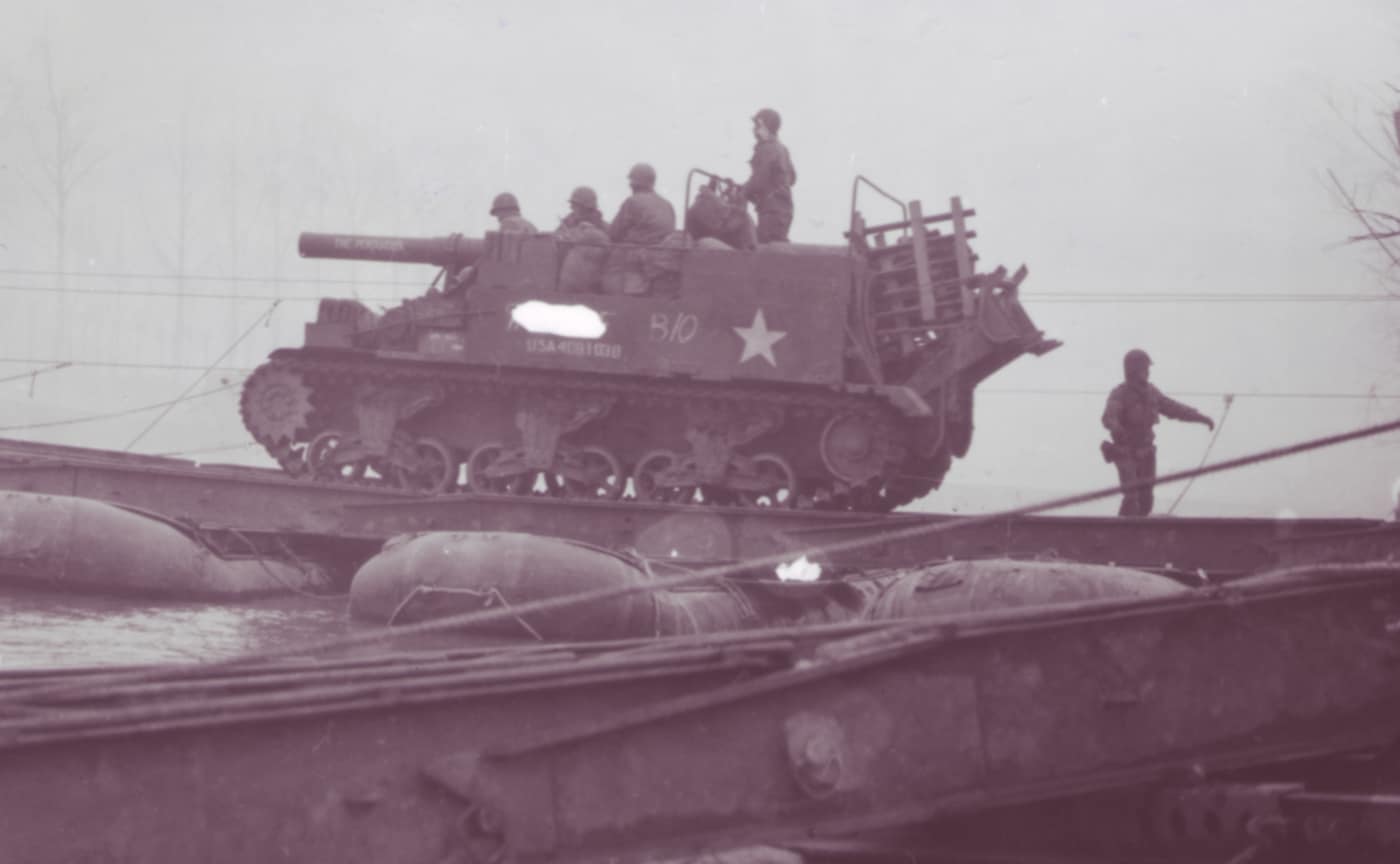
Today, only one M12 remains, preserved at the U.S. Army Artillery Museum at Fort Sill, Oklahoma. Its 155mm gun may be silent now, but the sound and fury of its devastating blasts still echo across time.
Editor’s Note: Please be sure to check out The Armory Life Forum, where you can comment about our daily articles, as well as just talk guns and gear. Click the “Go To Forum Thread” link below to jump in and discuss this article and much more!
Join the Discussion
Continue Reading
Did you enjoy this article?

 82
82






